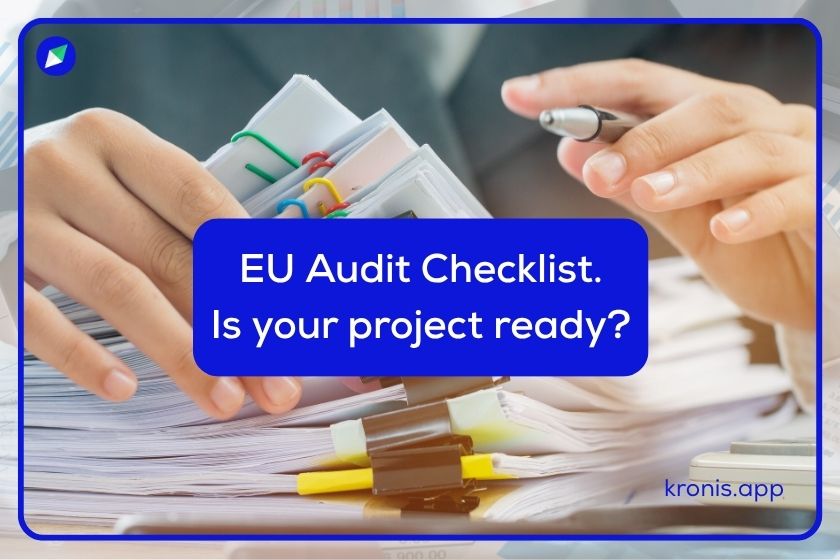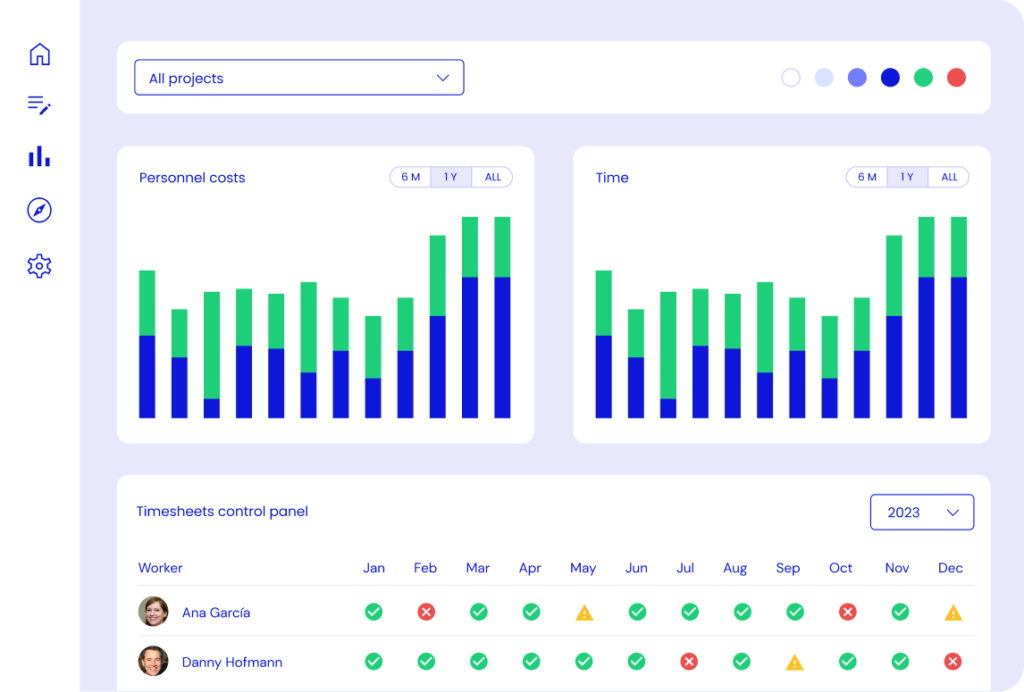From the first notification to the final report, learn exactly what EU auditors check, which mistakes cost you funding, and how to build an audit-proof workflow with confidence.

Let’s Talk Honestly About EU Audits
If you manage European projects, you’ve probably heard a dozen horror stories about EU audits: last-minute document hunts, panic when an auditor asks for an “original timesheet from three years ago”, or the shock of seeing funding cut because of a simple missing signature.
But here’s what most guides don’t tell you:
You don’t need to be afraid of audits—if you know what’s expected and set up your workflow from day one, you can turn audits from a crisis into just another routine task. Audits are simply the Commission’s way of checking that public money is used correctly. They’re not designed to trip you up—they’re to protect trust in European funding. That said, small mistakes or missing documents can still put thousands of euros at risk, even for the best-intentioned teams.
As someone who’s seen dozens of audits—some that went smoothly, some that didn’t—my mission is to demystify the process, show you exactly what matters, and make audit readiness accessible for everyone, not just compliance experts.
What Makes EU Audits So Challenging? (And Why Most Teams Stress Out)
Unlike national funding checks, EU project audits —especially for Horizon Europe— are detailed, strict, and sometimes happen years after your project is finished.
- The rules are long and technical (hello, Article 25!)
- You must keep every document, timesheet and proof—even if team members leave or files change hands.
- The audit can check anything, from your bank transfers to your project meeting notes.
What’s the real challenge? It’s not the rules themselves—it’s building daily habits and workflows that make compliance natural and repeatable, no matter how busy your team gets.
Stop Hoping, Start Preparing: Audits Are Routine, Not a Threat
Instead of worrying, accept audits as part of EU project life. Like taxes, they’re not optional—but with the right approach, they’re manageable.
If you work on a Horizon Europe or any EU-funded project, sooner or later your number will come up. Audits are not rare, especially for bigger budgets or high-profile research. And under Article 25 of the Model Grant Agreement, the Commission or the Court of Auditors can check your project for five years after the last payment.
Why does the EU audit you?
Because these are public funds. Audits keep the system transparent and fair, and protect honest teams like yours from losing money to avoidable mistakes.
What Actually Triggers an EU Audit—and What Auditors Will Check
An EU audit can happen to any project—big or small. Triggers include random selection, large budgets, high-profile topics, reporting red flags (such as errors, inconsistencies, or late submissions), or complaints from partners or third parties. In short, no project is ever truly “too small” to be audited.
Once selected, the process is governed by Article 25 of the Model Grant Agreement. Auditors have the right to review all your project documentation: timesheets, contracts, invoices, technical and financial reports, emails, and internal communications. They may also interview your team or visit your offices. Every relevant record must be safely stored for at least five years after your final payment—if it’s missing, the related cost will almost certainly be rejected.
What are auditors looking for? In practice, it comes down to three essentials:
-
Evidence: Can you prove every cost, activity, and deliverable?
-
Consistency: Do your records match your reports and official statements?
-
Retention: Is every record still available and accessible, even years later?
Pro Tip: The European Commission has developed an Internal Control Questionnaire that serves as a guide for project teams. This questionnaire highlights the areas most likely to be reviewed—such as your internal procedures, controls, and team responsibilities—and is an excellent reference when preparing for an audit.
What Happens During a Real EU Audit? (A Step-by-Step Overview)
- You receive a notification.
There’s a list of required documents and a deadline. - Document review and submission.
You gather everything, upload to a secure portal or prepare for a visit. - Audit meetings/interviews.
Auditors may meet your team, ask about workflows, and request clarifications. - Preliminary findings.
You can clarify issues or provide missing info. - Final report.
They confirm what’s accepted, flag ineligible costs, and may require funds to be returned if something’s missing.
Common Audit Mistakes—And How to Dodge Them
- Missing or unsigned timesheets: Make daily entry and digital signatures part of your culture.
- Invoices don’t match your financial statements: Double-check before every report.
- Lost files after staff turnover: Use a shared digital system, not personal folders.
- Unreported subcontracting: Always declare suppliers and save every contract.
- Deliverables missing or scattered: Centralise every project output in one folder.
Building an Audit-Proof Workflow (For Teams Who Want Zero Surprises)
- Use a single digital platform.
Store everything—documents, timesheets, approvals—in one place, with version history. - Automate reminders and deadlines.
Let software alert you about missing signatures or reports (Kronis does this out-of-the-box).. - Train everyone—no exceptions.
Every team member, from admin to PI, should know the basics of audit readiness. - Run mock audits.
Once or twice a year, pretend you’re the auditor. Find what’s missing before anyone else does. - Assign clear roles.
Who’s responsible for timesheets? Who keeps invoices? Who uploads deliverables? Document it.
Final Thought: Don’t Let the Word “Audit” Scare You
Audits are part of European funding. If you see them as a regular milestone (not a threat), and set up your team with the right tools and habits, you’ll never have to fear that email again.
Want to make your next audit a routine, not a risk? Book a demo with Kronis or download our free EU Audit Checklist and start building peace of mind today.

Indirect Costs in Horizon Europe: Flat Rates, Real Costs, and How to Stay Compliant

Equipment & Direct Costs in Horizon Europe: How to complete the financial statement


